What do you do when a recipe calls for “poultry seasoning” and you don’t have any, but you do have a pantry cabinet full of regular, unblended spices?
Make your own, of course! It’s a really simple recipe.
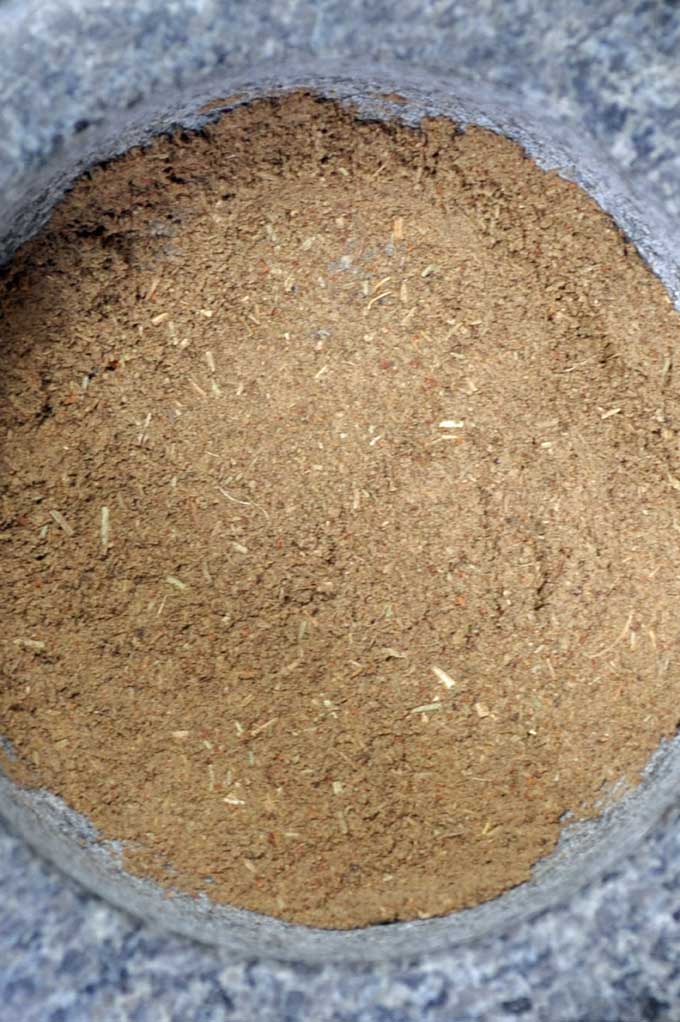
Full disclosure – that’s exactly why this guide now exists. I was making a recipe that required poultry seasoning – I had none on hand, and didn’t feel like running to the store for the umpteenth time today.
Screw it, I’ll make my own! Can’t be that hard.
What’s In It?
Dried sage and thyme make up the bulk of the flavor with their highly aromatic aroma and woodsy overtones. Most often, poultry seasoning also includes nutmeg, thyme, marjoram, rosemary, and black pepper.
Commercial and DIY blends often incorporate other spices such as celery seeds, allspice, dried and ground ginger, lemon peel, savory, parsley, oregano, dried onion, granulated garlic, cayenne pepper, dried and ground bell pepper, and/or cloves.
What Else Can I Use It On?
You may be saying to yourself, “Self, I really just need a dash. Can I make a smaller portion?”
Sure you can. Just cut our recipe down by a half or a quarter. But keep in mind: there are also lots of other recipes and entrees that this spice blend could… well, spice up!
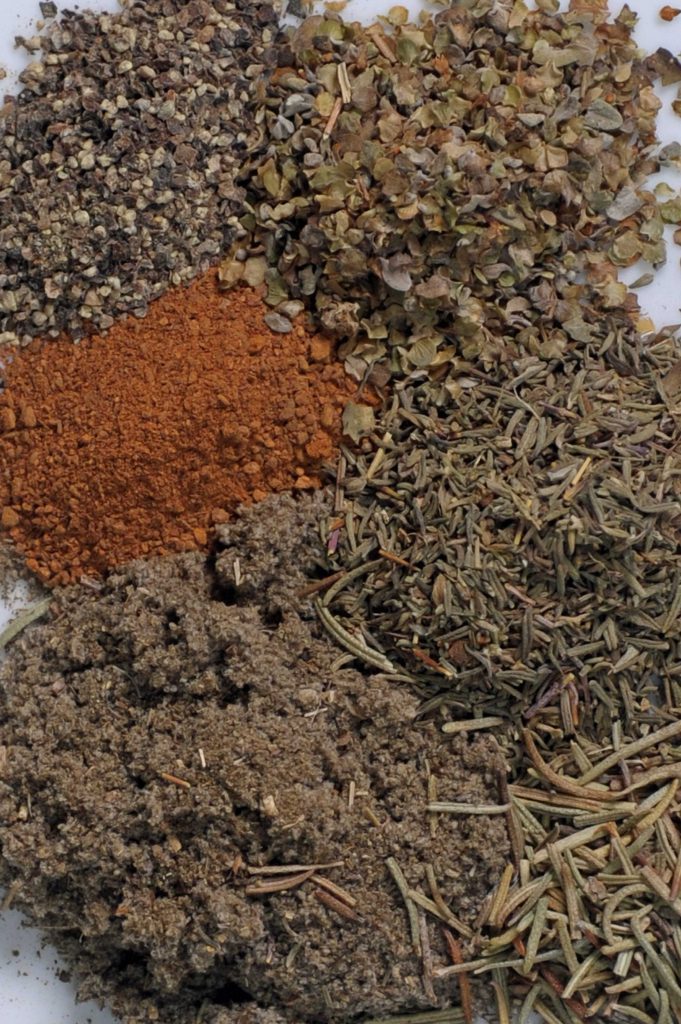
The main purpose of this spice blend is to flavor up chicken, turkey, and stuffing. But it may also be used to add a little lift to red meats, veggies, savory pies, soups and stews, and many other savory dishes.
I find that when I’m trying to throw together a weeknight meal in a rush, a bit of poultry seasoning keeps me from having to dig through various bottles on my spice rack to come up with a good flavor combination.
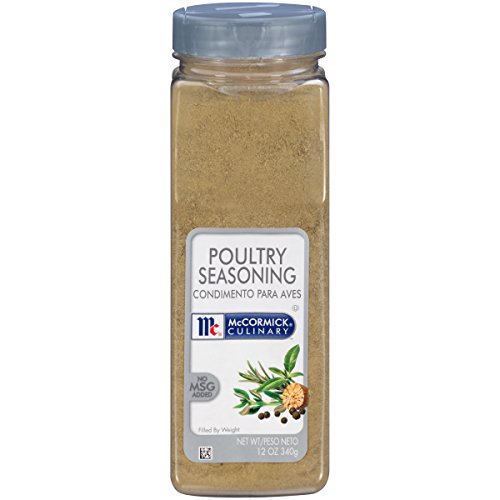
McCormick Culinary Poultry Seasoning available on Amazon
A commercial blend is nice to have on hand though, and I’d recommend keeping a large 12-ounce bottle of McCormick’s in your spice cabinet for a quick and easy solution (and the big bottles are about 5x less expensive than buying those small containers).
The Recipe
- 2 1/2 teaspoons ground dried sage
- 1 1/2 teaspoons dried thyme
- 1 teaspoon dried marjoram
- 3/4 teaspoon dried rosemary
- 3/4 teaspoon ground nutmeg
- 1/2 teaspoon course ground black pepper or peppercorns
- Mix all ingredients together.
- Reduce to a powder in a mortar and pestle.
Nutritional Info*
Cooking by the Numbers…
Step 1 – Measure and Mix
Measure out all of the basic spices. Add any other optional varieties that you’d like to incorporate.
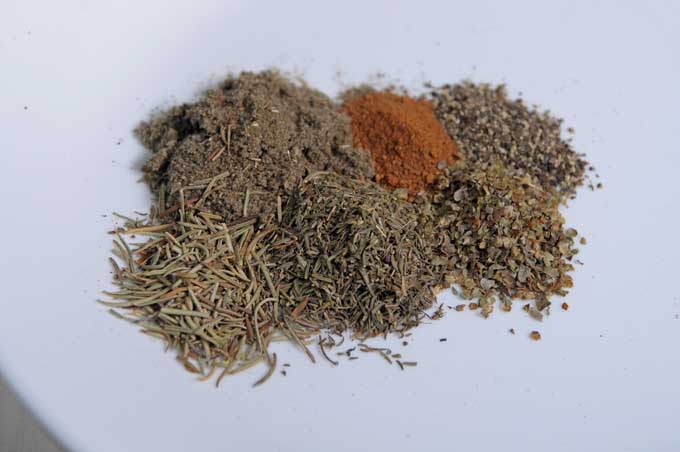
Use a fork to thoroughly blend the spices together.
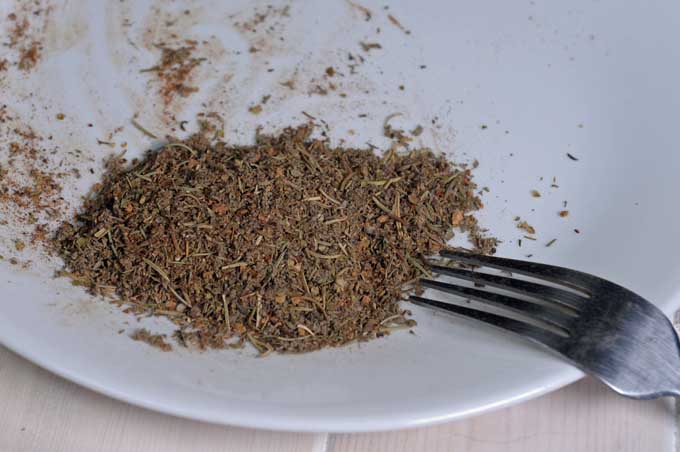
Step 2 – Grind with a Mortar and Pestle
Dump the mixture into a mortar and grind with a pestle for a minute or two until the blend is mostly powdered.
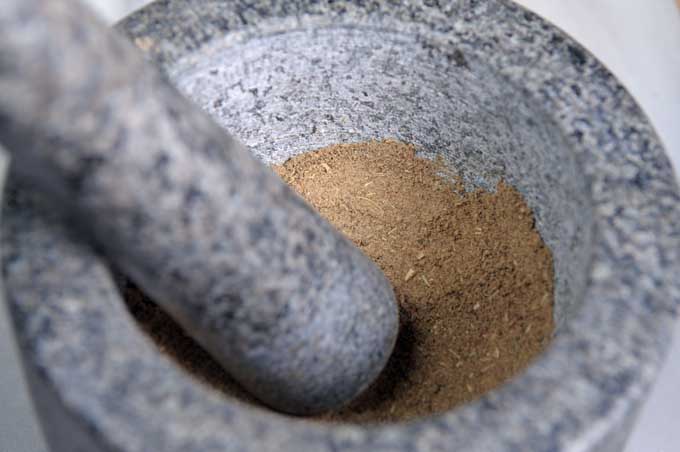
In a pinch, you can use an electric spice grinder or a blade style coffee grinder to process the blend, but I find that a mortar and pestle does a better job with getting all of the ingredients to a more powdered state.
Step 3 – Seal and Store
Place your powder into an airtight container (pill bottles work well for this, as do many of these storage containers intended for tea) and store in a cool, dry location out of direct sunlight. Light and air are killers of the aromatics in spices.
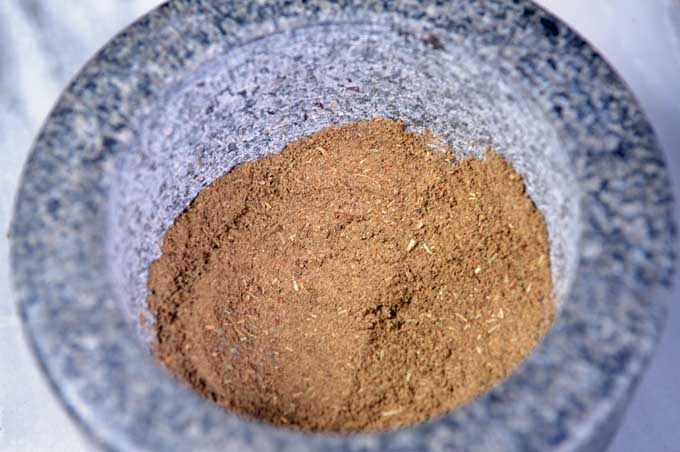
How about you? Do you have any ideas for using or making poultry seasoning? Be sure to let us and other readers know in the comments below.
Also, be sure to check out all of our spice and herb articles now or our complete guide where we discuss 88 different types of fresh and dried varieties and blends.
Don’t forget to Pin It!
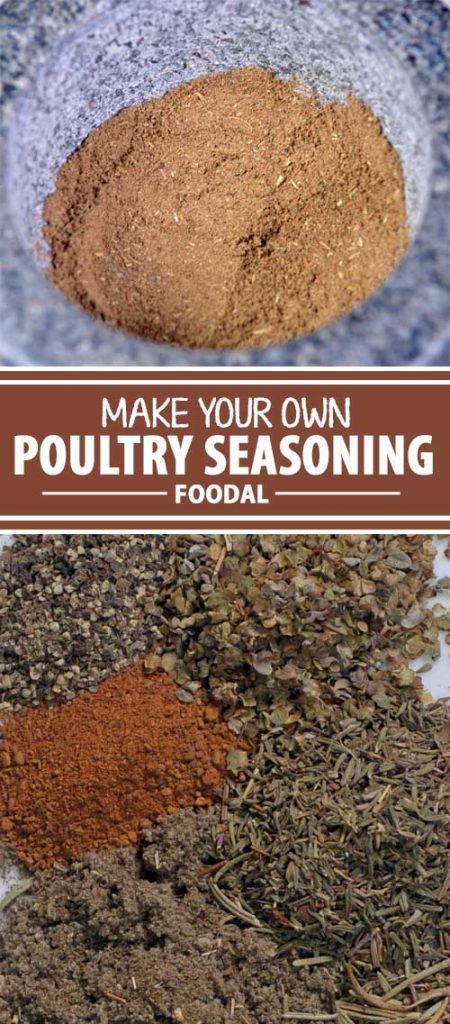
Photos by Mike Quinn, © Foodal / Ask the Experts, LLC. ALL RIGHTS RESERVED. See our TOS for more details.
About Mike Quinn
Mike Quinn spent 20 years in the US Army and traveled extensively all over the world. As part of his military service, Mike sampled coffee and tea from all virtually every geographic region, from the beans from the plantation of an El Salvadorian Army Colonel to "Chi" in Iraq to Turkish Coffee in the Turkish Embassy in Kabul, Afghanistan. He spent nearly a decade in the Republic of Korea where he was exposed to all forms of traditional teas. Mike formerly owned and operated Cup And Brew, an online espresso and coffee equipment retail operation.


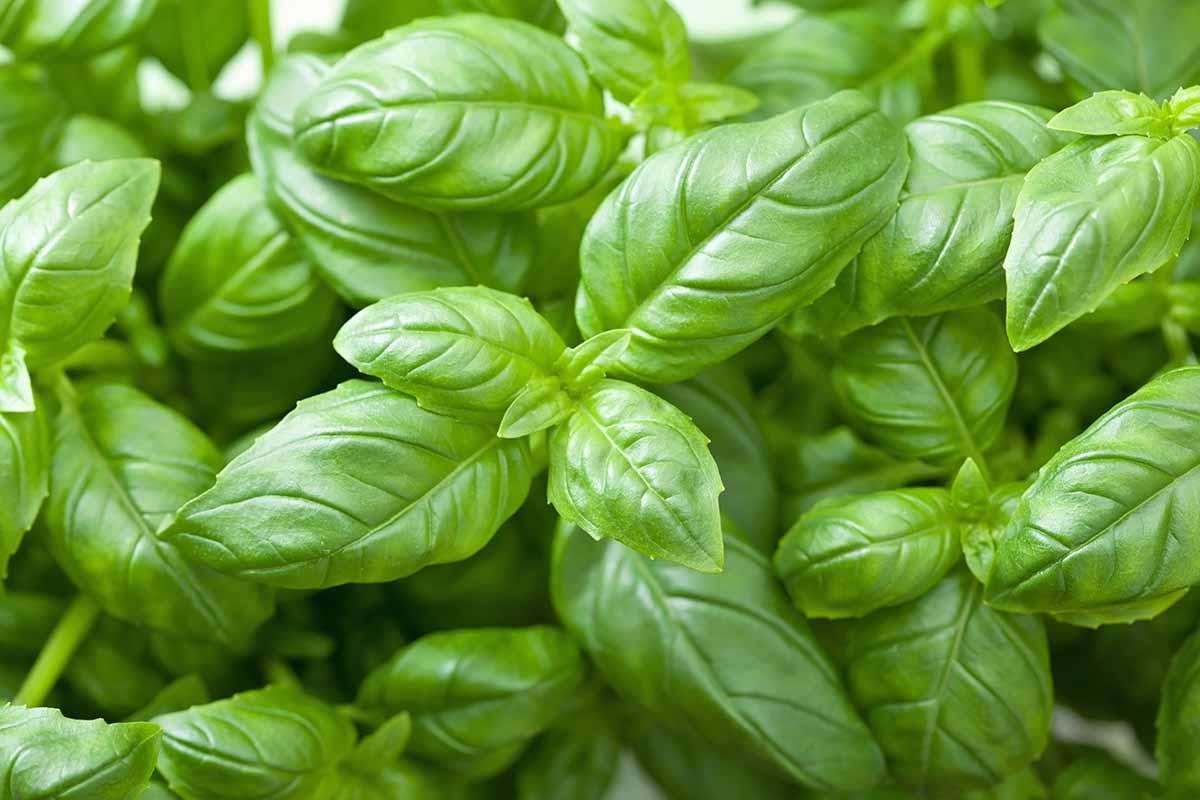
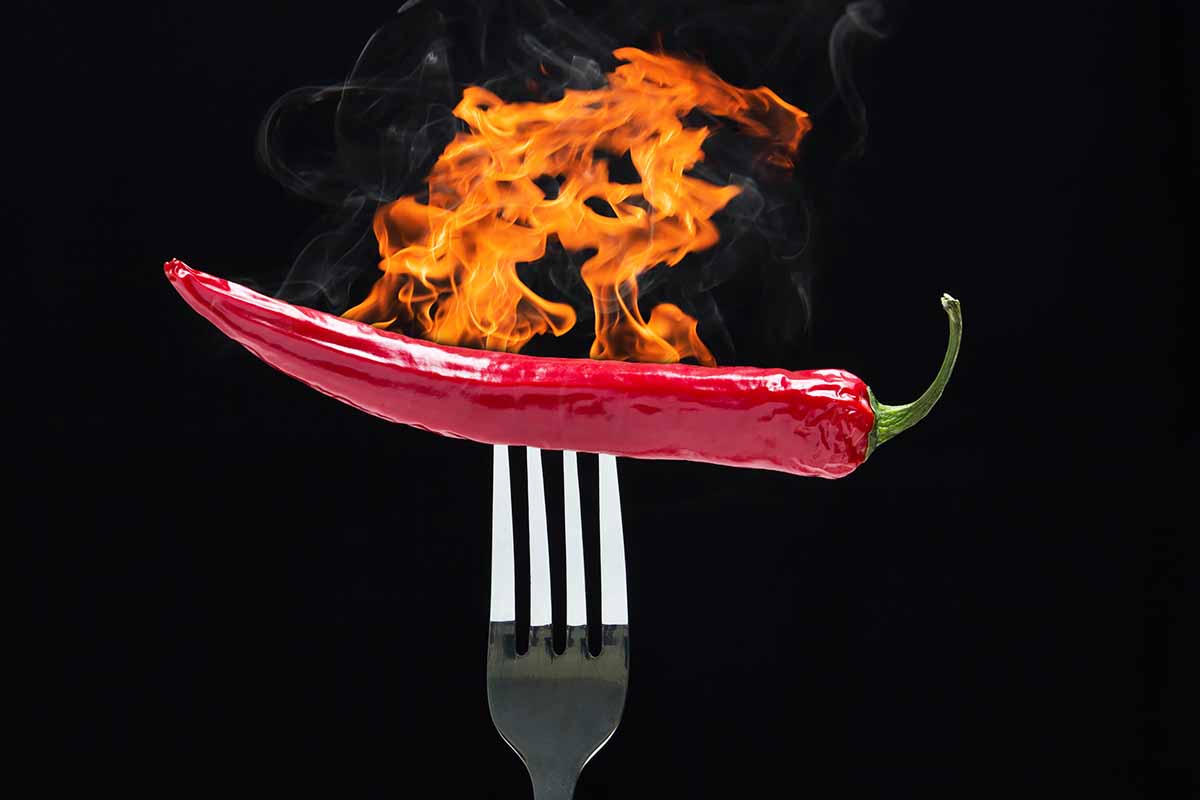
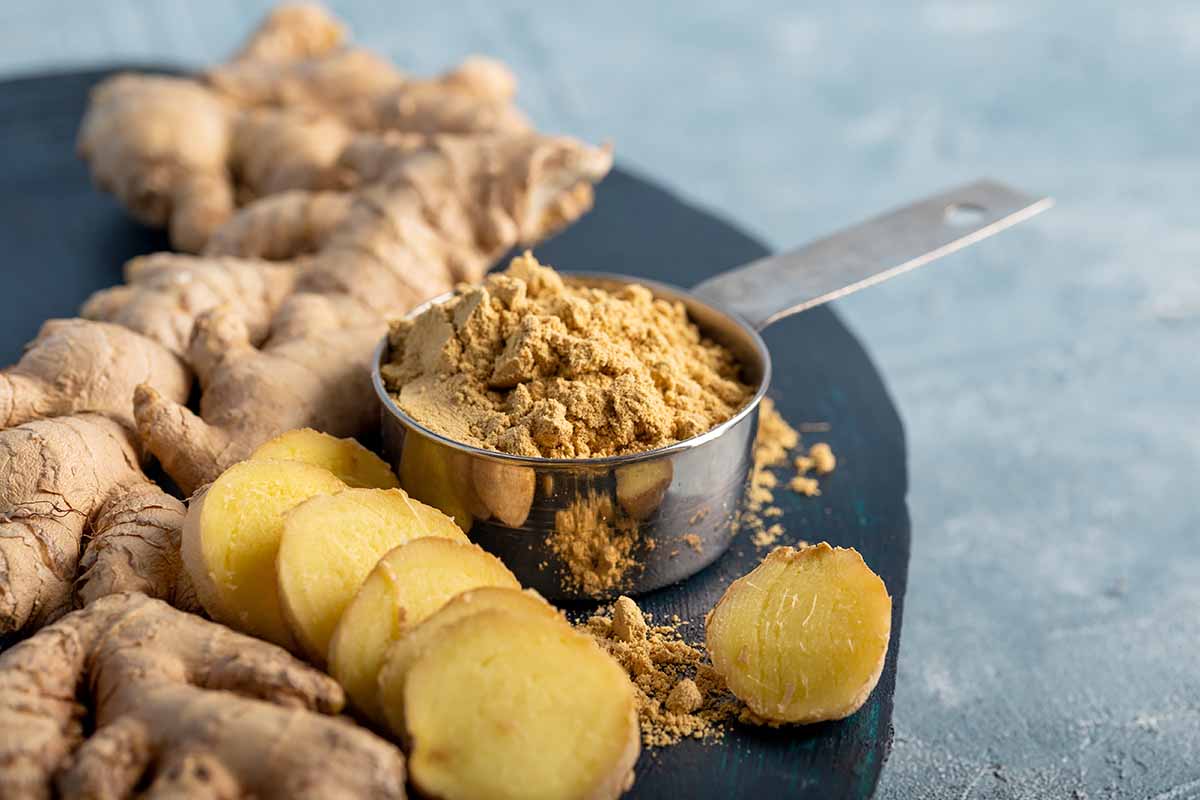
Yes, I use poultry seasoning in my meatloaf and also in my gravy.
Can I use Italian seasoning instead of there’s like three or four top spices
Absolutely!
I use this on WF’s organic flour tortilla wraps, to add the taste of chicken without any actual chicken. Avocado, cooked or raw green veggies, black beans or garbanzos, smoked Gouda “cheeze,” heated lightly. Lovely. Thank you!
Sounds good Kate, thanks for sharing!
Great base seasoning for homemade breakfast sausage. I add a little extra sage for the sausage.